
Fifty years ago, on March 16, 1968, U.S. soldiers attacked the Vietnamese village of My Lai. Even though the soldiers met no resistance, they slaughtered more than 500 Vietnamese women, children and old men over the next four hours, in what became known as the My Lai massacre. After the massacre, the U.S. military attempted to cover up what happened. But in 1969 a young reporter named Seymour Hersh would reveal a 26-year-old soldier named William Calley was being investigated for killing 109 Vietnamese civilians. Today, memorials have been held in My Lai to mark the 50th anniversary of this horrific attack.
Transcript
AMY GOODMAN: Today, we begin a special series looking back at 1968, a pivotal year in modern American history. It was a year that saw the assassination of Dr. Martin Luther King and Robert Kennedy, historic student strikes from Columbia to San Francisco State, the Soviet invasion of Czechoslovakia, the Chicago Democratic Convention protests and the escalation of the Vietnam War.
Fifty years ago today, on March 16, 1968, U.S. soldiers attacked the Vietnamese village of My Lai. U.S. troops arrived at 7:30 a.m. local time. Even though the soldiers met no resistance, they slaughtered more than 500 Vietnamese women, children and old men over the next four hours, in what became known as the My Lai massacre. The soldiers raped women. They burned their houses. They mutilated the villagers’ bodies. One U.S. soldier said he was ordered to “kill anything that breathed.”
Memorials have been held today in My Lai to mark this 50th anniversary. Survivors gathered to describe the horror of what happened March 16th, 1968.
PHAM THI THUAN: [translated] A hundred and seventy people, and they shot them all dead. They shot them all. They shot once, they took one minute break, and opened fire for the second, then the third time. My father, who was in his eighties, was injured and tumbling, then crawling. I lay very still in the mud as if I was dead, and I glanced at him. I saw him, but I dared not speak to him, in fear they might hear me and shoot me. I wanted to yell at him to lie down, and maybe they won’t shoot again. But they noticed him and shot half of his head away.
AMY GOODMAN: After the My Lai massacre, the U.S. military attempted to cover up what happened. But in November of 1969, a young reporter named Seymour Hersh would reveal a 26-year-old soldier named William Calley was being investigated for killing 109 Vietnamese civilians. In 2015, Sy Hersh appeared on Democracy Now! and discussed what the U.S. soldiers did on the day of the massacre.
SEYMOUR HERSH: But that morning, they got up thinking they were going to be in combat against the Viet Cong. They were happy to do it. Charlie Company had lost 20 people through snipers, etc. They wanted payback. And they had been taking it out on the people, but they had never seen the enemy. They’d been in country, as I said, in Vietnam for three or four months without ever having a set piece war. That’s just the way it is in guerrilla warfare—which is why we shouldn’t do it, but that’s another story. And they went in that morning ready to kill and be killed on behalf of America, to their credit. They landed. There were just nothing but women and children doing the usual, as you said in your intro—cooking, warming up rice for breakfast—and they began to put them in ditches and start executing them.
Calley’s company—Calley had a platoon. There were three platoons that went in. They rounded up people and put them in a ditch. … The other companies just went along, didn’t gather people, just went from house to house and killed and raped and mutilated, and had just went on until everybody was either run away or killed. Four hundred and some-odd people in that village alone, of the 500 or 600 people who lived there, were murdered that day, all by noon, 1:00. At one point, one helicopter pilot, a wonderful man named Thompson, saw what was going on and actually landed his helicopter. He was a small combat—had two gunners. He just landed his small helicopter, and he ordered his gunners to train their weapons on Lieutenant Calley and other Americans. And Calley was in the process of—apparently going to throw hand grenades into a ditch where there were 10 or so Vietnamese civilians. And he put his guns on Calley and took the civilians, made a couple trips and took them out, flew them out to safety. He, of course, was immediately in trouble for doing that.
AMY GOODMAN: That was Seymour Hersh on Democracy Now! His reporting on My Lai and the military’s cover-up altered how many Americans viewed the war in Vietnam. He would win the Pulitzer Prize for his reporting.
Only one soldier was convicted for the mass killings: Lieutenant William Calley. He was initially sentenced to life in prison, but only served three-and-a-half years under house arrest. This is an edited excerpt of the Vietnamese documentary The Sound of the Violin in My Lai.
NARRATOR: The only American casualty on that day was a black soldier, Herbert Carter, who could not stand such mad killing. He shot himself in the foot so that he could not have to take part in the massacre. Herbert later related, “I saw an old man standing in the middle of the rice field waving at us in a friendly manner, but they shot him. I saw no Viet Cong in the village, only poor farmers running away from their burning huts, and then they shot them dead.”
Mrs. Le is lucky. She was one of the rare survivors of the massacre. This is the memorial still held for 102 people, mostly women and children, who were killed along this road that day. Haeberle’s nervous system must have been made of steel to be able to take these pictures. A baby was killed, still hanging on its dead mother’s breast. Mrs. Le and her son were spared because they buried themselves under the bodies of three or four villagers. Nearby, her nephew, Chung Bo, was laying on top of his brother, Chung Nam, to shield him from the bullets. Both of them were killed. Mrs. Nhung and Sister Nhanh are also survivors of the massacre, but their survival was somewhat special. They were saved by the helicopter crew: Hugh Thompson, Larry Colburn and Glenn Andreotta.
PHAM TI NHUNG: [translated] We survived because these Americans waved to us and took us on their helicopter. Thanks to them, I’m still alive today.
PHAM THI NHANH: [translated] They shot like madmen. When they came, I ran for the shelter. A helicopter landed near us. The men waved, and we came out. They pushed us onto the ship and took off. We were dead scared. Were they going to drop us into the sea? After some time, the helicopter landed, and they signaled us to run away. It was only then that we knew we had been saved.
HUGH THOMPSON: There was a lot of anger and anger that was not directed at the Vietnamese people, it was directed at my fellow soldiers who went crazy that day. I’m just real sorry that my crew could not have done more. I’m extremely sorry for my fellow Americans for what happened. It wasn’t right. It wasn’t war. And I pray to God something like this never happens again.
AMY GOODMAN: An excerpt from the Vietnamese film The Sound of the Violin in My Lai. The film was directed by Tran Van Thuy and produced by Vietnam War veteran Mike Boehm, who is in My Lai today for the memorial with other veterans who became peace activists. Another vet who returned to Vietnam for this 50th anniversary of the My Lai massacre is Eric Herter.
ERIC HERTER: “Sorry” is just not adequate for what happened in Vietnam due to America’s, whatever you call it here, invasion. It’s wrong. It’s just wrong. And it was deeply, deeply, deeply wrong. And I don’t think we’ve acknowledged it.
AMY GOODMAN: Vietnam War veteran Eric Herter, speaking today on this, the 50th anniversary of the My Lai massacre, when U.S. forces slaughtered more than 500 Vietnamese women, children and old men. The date: March 16th, 1968. The war would continue for another seven years. Some scholars estimate as many as 3.8 million Vietnamese died during the war. Up to 800,000 perished in Cambodia, another 1 million in Laos. The U.S. death toll was 58,000. When we come back, we’ll speak to two Vietnam War veterans and a peace activist who traveled back to Vietnam to mark the 50th anniversary of the My Lai massacre today. Stay with us.
[break]
AMY GOODMAN: “Universal Soldier” by Buffy Sainte-Marie, a First Nation Cree singer.

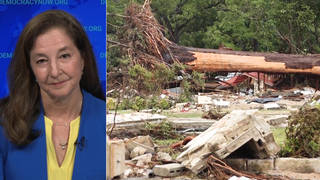
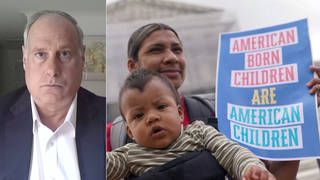
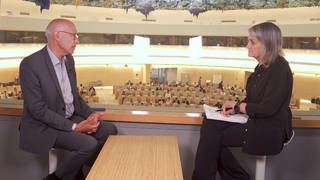
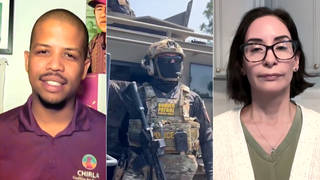
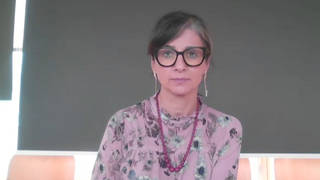
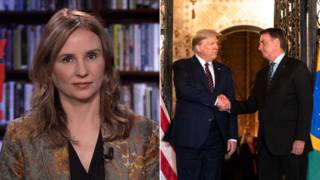
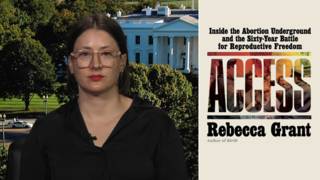
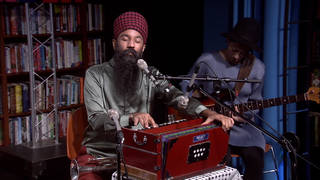

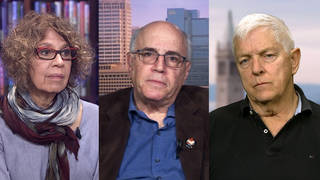

Media Options